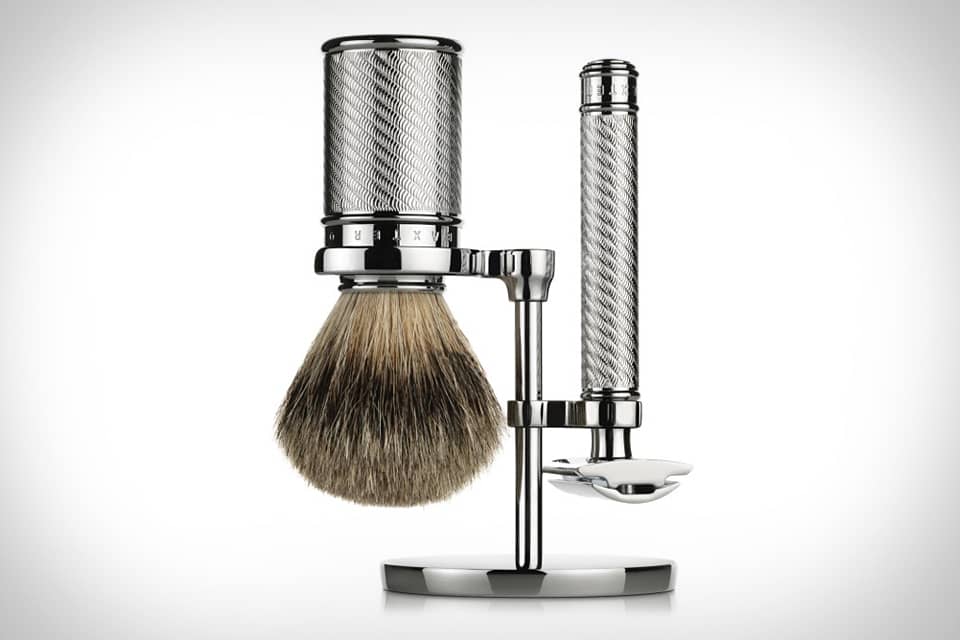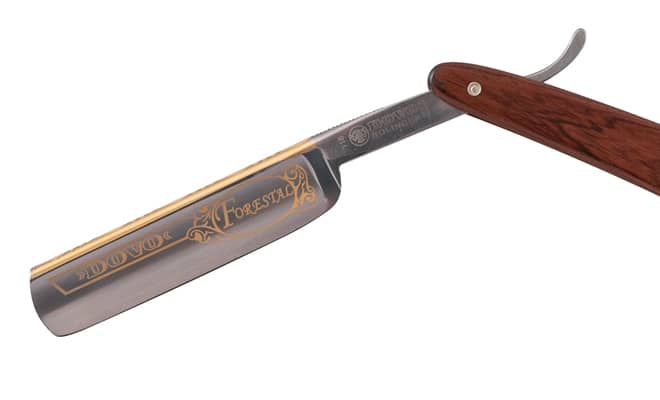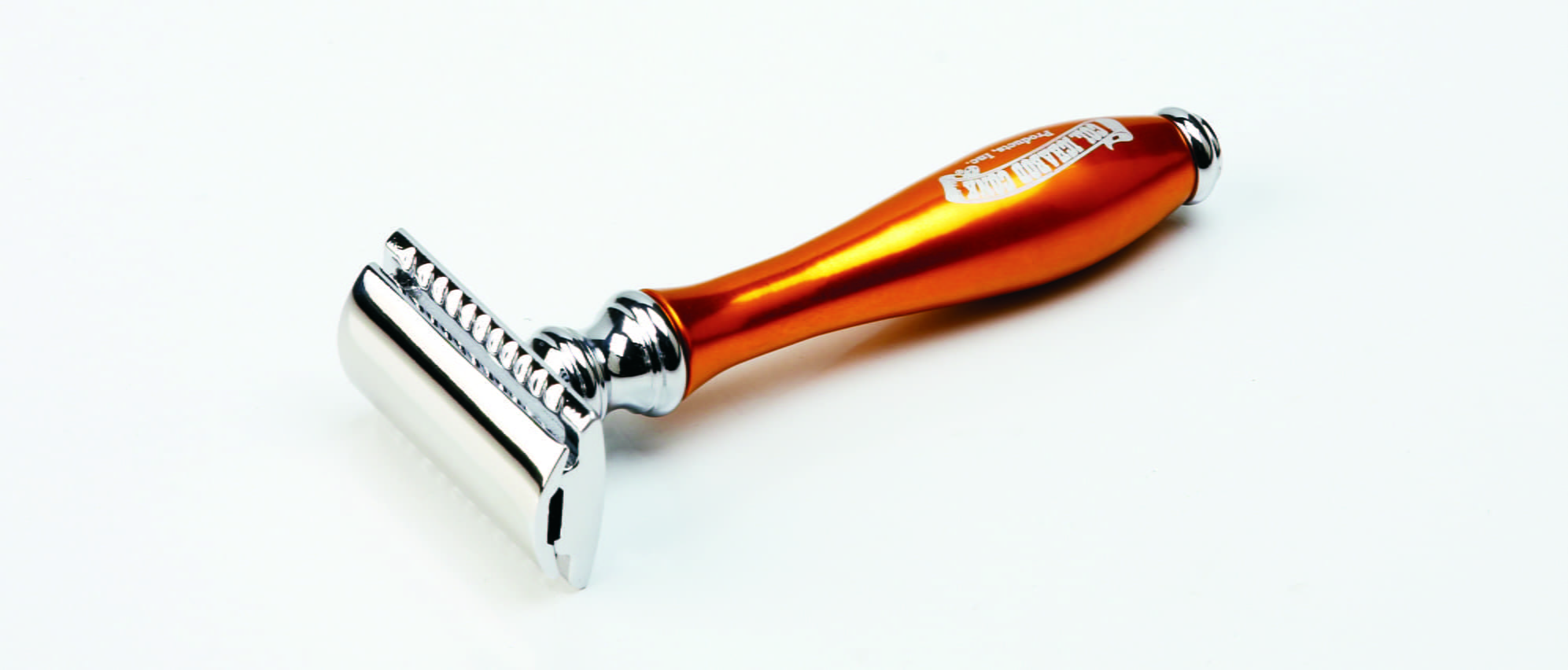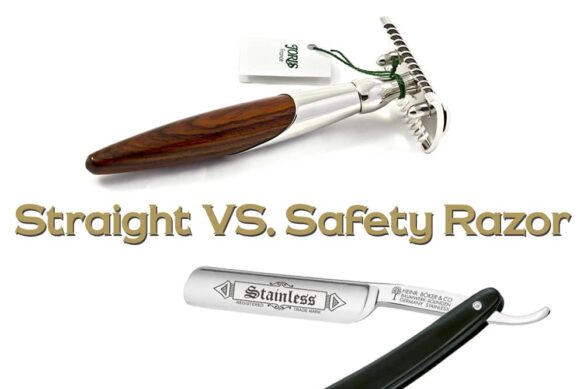Straight Razor VS Safety Razor. What is the difference?
When it comes to keeping up neat appearances, razors are very important. However, if you think that all razors are equal, you need to think again. The truth is that there are different kinds of shaving razors out there and each tends to deliver its own results. They also require different processes. Straight razor and safety razor are among the two most common types of razors and both of them are great options for daily shaving. In this article, we take a look at these two types of razors and examine the key similarities and differences between them.
Size of blade
Blade length is one aspect that forms a key difference between straight razors and safety razors. The straight razor, invented and used originally before safety razor was invented, is made using a straight blade that is long and is also attached to a handle. On the other hand, the safety razor is more like the plastic cartridge razor that is easily available at any drugstore. It contains a short blade attached to the top side of the longer handle that you can hold when shaving your face.
Method of Use
The method of use is another area that these shaving razors differ in. You will need a different shaving method when using a straight razor than when using a safety razor. In the case of a straight razor, you will need resting your three fingers on the back of your blade with your thumb placed on the blade’s side. Your pinky will need to be on the tang. After that, use your razor to shave the hair as well as the shaving cream off your face gently.
On the other hand, shaving with a safety razor involves holding on its designated handle as you would do with a plastic cartridge. Then, gently shave the hair on your face with a razor almost at right angle to your face. Try to keep the pressure as low as possible.

Safety
As the name suggests, safety razors are the safer option than straight edge razors but all of these will require mastering of the technique. In the case of a safety razor, the gadget itself controls how much of blade that can get to your face as well as at what angle.
However, in case of a straight razor, it is you who controls the angle of shaving as well as the amount of blade touching your face. This means you are at a greater risk of cutting your face.
Other tools needed
Both safety razors and straight edge razors require soap, shaving brush as well as a shaving cream in order to shave. However, the straight edge razor normally requires more tools and maintenance so as to keep it in top shape for a shave. In the case of a straight razor, you will also require a hone that helps restore the teeth of your blade after getting worn down. Also, straight razors require strops. These smooth out a blade after it has been sharpened on the strop.
Pros and Cons of each
It is often more cost-effective to use a safety razor than using a straight edge razor or even the regular cartridge razor system that you would ordinarily find at grocery stores and pharmacies. A straight razor involves costs such as the cost of the razor itself but also those of stropping paste, hones and strops. Then there is also the cost of the shaving soap and shaving brush or a high-quality shaving cream to enable the best results to be got from the shaving.
However, there is good news because these expenses tend to drop after you buy all the required supplies as you won’t have to replace them frequently. In the following section, we take a look at the pros and cons of each razor type and tell you the one that makes the most sense for a new and wet shave? See how the pros and cons of these stack up.

Straight Razor Cons
- Involves high initial cost in strops, blade sharpening pastes, shaving brush and hones.
- A lot of learning needed in order to learn the ropes of straight shaving.
- High probability of cuts, scratches and nicks although these tend to reduce as skill increases.
Straight Razor Pros
- It results in close and individualized shave as well as great pride
- Although a straight razor generally takes more time to shave with than what an average person would want, it still turns the art of shaving into a hobby. This means that you won’t care about the amount of time that it takes for shaving. You will also require shaving less often which makes the time to balance out at the end of it all.

Safety Razor Pros
- Modest initial cost and also minimal continuing cost involved in replacing blades
- It can be easily adjusted from cartridge to the safety type blade
- The possibility of cuts, nicks and scratches are moderate and will also reduce further as skill level ups.
Safety Razor Cons
- The shave is fairly close but there are limitations based on the cant and the shape of razor
Conclusion
The choice of the best shaving razor is basically a personal matter. For someone just starting out in shaving, using a straight edge razor might seem like a daunting task as the learning curve tends to be steeper compared to a safety razor. But for some gentlemen, nothing beats the close shave that can only be found with a straight razor. Another thing that you will need to consider when selecting between a safety razor and a straight edge razor is time. According to some people, newbies ought to start with safety razors and gradually move up but for some men, the best thing is to start with a straight razor especially if that happens to be your ultimate goal. Whichever the way, you need to be prepared to start slowly and appreciate the fact that for you to be perfect at shaving, you will need sometime. It is time to forget disposable razors and start shaving like a real man!

